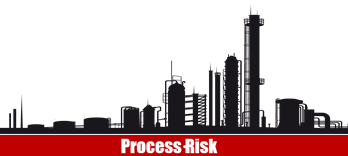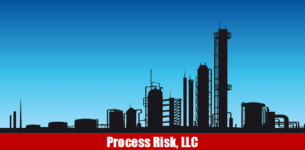Dust Hazard Analysis and Management
ConsultingNFPA 652:2016, Standard on the Fundamentals of Combustible Dust, requires that a safety management system (SMS) address the hazards of combustible dusts.
The management system must address topics such as employee participation; hazard analysis; operating procedures; inspection, testing, and maintenance; emergency planning and response; incident investigation; and management of change. The topics covered by the SMS are similar to those covered by OSHA’s process safety management (PSM) standard. These requirements are supported by NFPA 654:2017, Standard for the Prevention of Fire and Dust Explosions from the Manufacturing, Processing, and Handling of Combustible Particulate Solids.NFPA 652 applies to facilities that manufacture, process, blend, convey, repackage, generate, or handle combustible particulate solids where the materials present a fire, flash fire, or explosion hazard. Industries that handle combustible dust.
Industry standards and government regulations around the world all advocate the use of safety management systems to address hazards in the workplace.Combustible dust explosions can kill and injure people and destroy entire buildings. The U.S. Chemical Safety Board (CSB) identified 281 combustible dust incidents between 1980 and 2005 that led to the deaths of 119 workers, injured 718, and extensively damaged numerous industrial facilities.
NFPA standards require that a safety management system is established for dust deflagration hazards.
Combustible dust hazards have the attention of regulators. Numerous mandatory OSHA standards include provisions that address combustible dust hazards. Some are industry-wide and others are industry-specific. Also, OSHA has implemented a Combustible Dust National Emphasis Program, CPL 03-00-008.
Ultimately, OSHA has the authority to regulate combustible dust hazards under the General Duty Clause that requires employers to provide a workplace free from recognized hazards that cause or are likely to cause death or serious physical harm to employees. An SMS for combustible dust hazards is essential for their proper management.
Services Offered
Dust Hazard Analysis
A dust hazard analysis (DHA) is required by NFPA 652:2016, Standard on the Fundamentals of Combustible Dust. The related NFPA 654:2017, Standard for the Prevention of Fire and Dust Explosions from the Manufacturing, Processing, and Handling of Combustible Particulate Solids, requires that the design of fire and explosion safety provisions for processes in facilities be based on a DHA of the facility and the processes. Any time a combustible dust is processed or handled, a potential for deflagration exists. The degree of deflagration hazard varies depending on the type of combustible dust and the processing methods used.
A DHA is a systematic review to address potential fire, flash fire, or explosion hazards associated with the presence of combustible particulate solids in a process or facility. It involves the identification and evaluation of the process or facility areas where fire, flash fire, and explosion hazards exist. Where such hazards exist, and departures from safe operating ranges are possible, specific hazard scenarios are identified and evaluated. Safeguards that are in place to manage the hazards are documented and the need for additional safeguards is considered.
Performance of design-stage DHAs.
Studies are performed at the design stage to improve safety before a process is built.
Performance of initial DHAs.
Initial DHAs are the first DHAs performed for an operating facility. They may be an update to a design-stage DHA.
Performance of revalidation DHAs.
DHAs must be updated and revalidated periodically to account for changes that may have been made to the process. Commonly a period of 5 years is used.
Development of new safety management systems.
Typically, this is done for new facilities or expanded facilities. We provide documentation for all elements of the program and usually assist in their implementation.
Improvement of existing safety management systems.
We conduct an initial assessment of the existing safety management system to identify areas for improvement. Sometimes companies may have a sound safety management system design but may be struggling with implementing it. We document the assessment and work to help improve weaker parts of the safety management system.
Improvement of specific safety management system elements.
We help companies fine tune specific elements of a safety management system such as operating procedures; inspection, testing, and maintenance; and management of change. We provide documentation of the work performed.
Other Information
A wide variety of materials can be explosible in dust form including food items (e.g. candy, sugar, spice, starch, flour, feed), grain, tobacco, plastics, wood, paper, rubber, pesticides, pharmaceuticals, dyes, coal, and metals (e.g., aluminum, chromium, iron, magnesium, and zinc). A SMS specifies policies and procedures to address elements in a hazards management program. It includes requirements for documentation, auditing, and management review of the program and the SMS. It addresses safety culture and performance metrics. Responsibilities are assigned, actions are tracked, and performance outcomes are evaluated.
Consulting Services
Consequence Modeling
Due Diligence Support Dust Hazard Analysis and Management
Dust Hazard Analysis and Management
Emergency Response Programs
Expert Technical Witness - Legal Support Services
Facility Siting & Consequence Modeling
HAZID
Hierarchy of Controls Analysis (HCA)
Human Factors Review and Analysis
Incident Investigation
Inherently Safer Technology
Layers of Protection Analysis
LNG Industry Support
Management of Change (MOC) - Process and Organizational Change Assessment
Mechanical Integrity
NEP Compliance Support all Industries
Procedure Development and Enhancement
Process Hazard Analysis (PHA)
Probability Modeling
Project Support and Process Integration
PSM / RM Program Enhancement and Optimization
PSM / RMP Auditing
PSM Program Development
Quantitative Risk Assessment
Risk Management Program (RMP) Support
Safeguards Protection Analysis (SPA)
Safety Instrumented Systems (SIS)
Safety Management Systems
Simultaneous Operations (SIMOPS) Review

